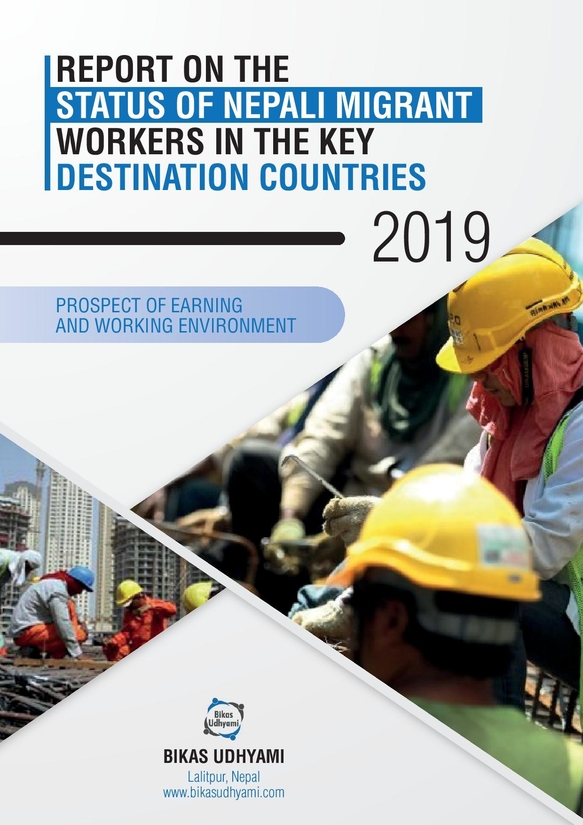REPORT ON THE STATUS OF NEPALI MIGRANT WORKERS IN THE KEY DESTINATION COUNTRIES: PROSPECT OF EARNING AND WORKING ENVIRONMENT (2019)
The Department of Foreign Employment (DoFE) of Nepal has issued a total of 3,554,683 labor permits over
the period of 2008/09-2016/17 to 153 countries. And about 86 percent of total work permit alone were issued
to Malaysia and GCC countries. Similarly, over the same period, about 45 thousand workers received work
permits through the Employment Permit System (EPS) to work in South Korea (Government of Nepal, 2017).
Over time, several institutional, legal, and operational frameworks of the Government of Nepal have been
established to facilitate and regulate the migration process, and to ensure workers’ rights in the destination
countries.
In this framework, Bikas Udhyami (BU) has undertaken the study entitled ‘Status of Nepali Migrant Workers
in the Destination Countries: Prospects of Earnings and Working Environment, which took place during
February 15, 2018 to January 15, 2019, with the support of The Asia Foundation (TAF) under the Sunaulo
Mauka project. The study consisted of an online and in-person survey with Nepali migrant workers currently
working in the destination countries to get information about their migration process, earnings perspectives,
working environment, and financial behavior. The study uses descriptive measures: the measure of central
tendencies and dispersion as a statistical tool to make an analysis of information. Since the study’s objective
focuses primarily on an understanding of the worker’s situation, it refrains from using statistical modeling,
and advanced statistical tools and technique.
The study is based on 1028 direct responses from the Nepali migrant workers currently working in the key
destinations countries. It analyses the monthly earnings of migrants in terms of the their skill level, education,
choice of the destination country, work experience, working situation in terms of working hours, overtime
working, and accommodation facilities. Also, we explore the migration process of the worker from Nepal to
acquire preliminary information, the cost of migration, taking orientation training and so on, and financial
behavior of the workers in the destination countries.
Objectives of the Study
- Lists out major job-types that Nepali migrant workers are taking up in the 8 different countries and highlights the comparative monthly wage-earning scenarios in terms of choice of country, skill level and educational attainment.
- Assesses the effectiveness of the government’s migrant related initiative such as Free Visa, Free Ticket, including the usefulness of orientation training, and the effectiveness of publishing job-demand in the national newspaper.
- Evaluates worker’s perspective regarding the migration process, which they had to go through in Nepal to go for a foreign job.
- Tries to find out the financial behaviors of the migrant workers in the destination countries and explain how grievances of the workers are being handled in the destination countries.
Download the study

